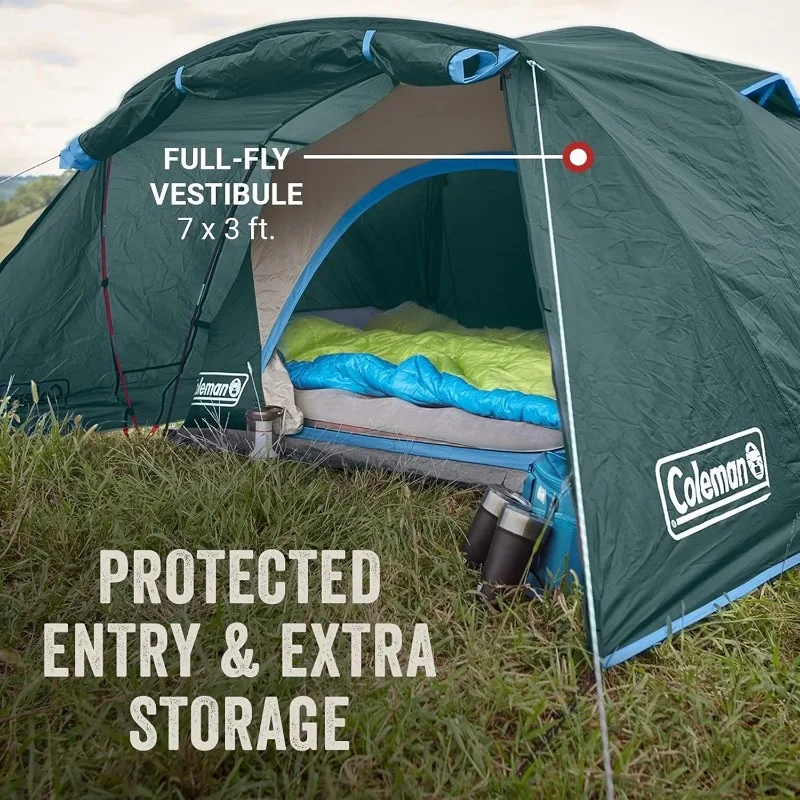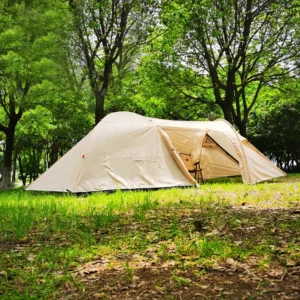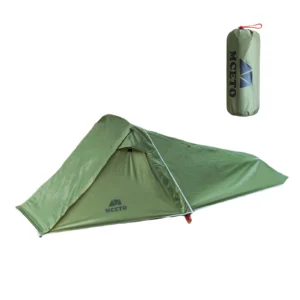Understanding Tent Vestibules: Your Campsite’s Essential Extra Space
A tent vestibule is that covered area outside the main tent body but still protected under the rainfly. Think of it as the front porch or mudroom of your tent—a transition zone between the wilderness and your sleeping quarters. This extra sheltered space serves as a buffer between the elements and your clean, dry interior living space.
Vestibules come in different forms. Most commonly, you’ll encounter integrated vestibules that are built into the tent design, attached to the main entrance. Some tents feature add-on vestibules that can be purchased separately and connected to your existing setup for additional coverage.
Definition Box
Tent Vestibule: A covered area created by the tent rainfly extending beyond the tent body, providing protected storage space without taking up interior tent room. It functions as a transition zone between the outdoors and your sleeping area.
The primary purpose of a vestibule is practical: it gives you a designated area to store gear, remove dirty footwear, and organize equipment—all while keeping these items protected from rain, dew, and dirt. Much like a mudroom in your home keeps the living spaces clean, a comprehensive tent vestibule storage system helps maintain order and cleanliness in your camping setup.
For campers new to this concept, understanding what a tent vestibule is and how it functions can transform your camping experience by creating more organized, convenient, and comfortable outdoor adventures.
7 Key Benefits of Vestibule Storage for Enhanced Camping
1. Maximize Your Tent’s Usable Interior Space
One of the most immediate benefits of utilizing your tent’s vestibule is the dramatic increase in usable interior space. When you move gear outside the main sleeping area and into the vestibule, you effectively reclaim valuable floor space—often as much as 30-40% of your tent’s footprint.
This extra space transforms your camping experience in several ways:
- Greater freedom of movement inside the tent
- More comfortable sleeping arrangements without gear crowding your sleep space
- Easier to change clothes without bumping into equipment
- Room to stretch out after a long day of hiking or activities
- Space to bring a small camp chair inside during extended rain
Consider a typical 2-person backpacking tent scenario: Without vestibule storage, two hikers with standard backpacking gear might find themselves cramped with barely enough room to lie down. However, by moving packs, boots, and cooking equipment to the vestibule, the interior instantly becomes a more livable space where you can actually sit up and move around.
The smart use of vestibule space can transform your living space within your tent, making even compact shelters feel surprisingly roomy. When shopping for your next tent, paying special attention to backpacking tents with functional vestibules can dramatically improve your camping comfort without adding significant weight to your pack.
2. Superior Weather Protection for Your Gear
A well-designed vestibule provides exceptional protection from the elements, helping to keep your valuable gear safe and functional throughout your trip. This weather shield works in multiple ways:
Rain and moisture protection is perhaps the most obvious benefit. Your vestibule keeps equipment dry during downpours and prevents overnight dew from soaking items like boots, camp chairs, and backpacks. The rainfly material typically extends fully to the ground, creating a protective barrier against splashing and runoff.
Vestibules also shield gear from harmful UV rays. Extended exposure to direct sunlight can degrade materials like nylon and plastic, but storing items in your vestibule’s shade helps preserve their integrity and extend their lifespan.
Wind protection is another significant advantage. Your vestibule creates a buffer zone that prevents lightweight items from blowing away and reduces strain on equipment that might otherwise be exposed to gusty conditions.
The effectiveness of this protection largely depends on proper setup. Ensuring your vestibule is properly tensioned with stakes and guy lines maximizes its weather-blocking capabilities. Many modern tents with effective weather protection features include reinforced vestibule designs specifically engineered to withstand challenging conditions.
For comprehensive information about maximizing this protection, our guide to weather protection using tent vestibules provides detailed strategies for different weather scenarios.
3. Create the Perfect Camp “Mudroom”
Your tent vestibule serves as an ideal transition zone—a true campsite mudroom—between the natural environment and your clean sleeping quarters. This functional space prevents dirt, mud, sand, and debris from migrating into your tent interior.
Here’s an effective process for using your vestibule as a mudroom:
- Remove and store dirty footwear immediately upon entering the vestibule
- Brush off excess dirt from clothing and gear while still in the vestibule area
- Store wet raincoats, ponchos, or outer layers in the vestibule to dry
- Keep a small camp towel in the vestibule for wiping down equipment or feet
- Use the vestibule floor for changing out of muddy pants or clothing before entering the main tent
This system is particularly valuable during rainy conditions when the contrast between the muddy outdoors and your dry sleeping bag becomes even more important. The vestibule creates a buffer zone where you can transition from “outdoor mode” to “clean tent mode” without tracking in moisture and debris.
Some campers enhance their vestibule’s mudroom functionality by adding a small piece of lightweight tarp or footprint material as a vestibule floor. This creates an easily cleanable surface that further protects your gear from ground moisture.

4. Extend Your Gear’s Lifespan Through Protection
Proper vestibule storage significantly extends the life of your camping gear, which translates directly into financial savings over time. This protection works in several important ways:
- Prevents UV degradation of materials by keeping gear shaded
- Reduces moisture damage that can lead to mold, mildew, or material breakdown
- Minimizes dirt and debris abrasion that gradually wears down fabrics and components
- Protects from environmental contaminants like tree sap, bird droppings, or pine needles
High-value items benefit most from this protection. For example, expensive backpacks with complicated suspension systems last significantly longer when not repeatedly soaked and dried. Technical footwear maintains its waterproofing treatments and structural integrity when protected from constant exposure to harsh elements.
The savings can be substantial—quality camping equipment properly protected might last 5-7 years instead of 2-3 years with constant exposure. For expensive items like technical backpacks ($200-300), premium hiking boots ($150-250), or specialized cooking equipment, this extended lifespan represents significant cost savings over time.
Understanding the value of proper waterproofing and protection for outdoor gear helps you make smarter decisions about how to store and maintain your equipment during camping trips.
5. Effective Odor and Moisture Management
A tent vestibule creates an effective buffer zone that keeps unwanted odors and excess moisture away from your sleeping area. This separation significantly improves comfort during multi-day camping trips.
Consider the typical sources of camping odors: sweaty hiking clothes, muddy boots, smoke-infused outerwear, and cooking equipment with food residues. When these items remain inside your main tent, their odors become concentrated in your sleeping space. By relocating them to the vestibule, you create a more pleasant interior environment.
Similarly, vestibules help manage moisture by providing a ventilated area where damp items can dry gradually. Wet raincoats, dew-covered camp chairs, and morning-damp boots can all release their moisture outside your sleeping area, reducing interior condensation and humidity levels.
The design of your vestibule plays an important role in this ventilation process. Models with adjustable openings allow you to control airflow based on weather conditions. Camping tents with specialized vestibules often feature additional venting options specifically designed to enhance this drying capability while maintaining weather protection.
This improved moisture management doesn’t just increase comfort—it also prevents the musty smell that often develops in tents when damp items remain inside for extended periods.
6. Enhanced Security for Your Belongings
While a vestibule isn’t a high-security vault, it does provide an additional layer of protection for your gear that offers several security advantages:
- Out-of-sight storage reduces opportunity theft at established campgrounds
- Creates a barrier against curious wildlife investigating your equipment
- Provides a perception of ownership that deters casual handling of your belongings
- Keeps gear consolidated rather than scattered around your campsite
Different vestibule designs offer varying levels of security. Fully-enclosed vestibules with zippered doors naturally provide better protection than open-sided awning designs. Consider your typical camping environment when evaluating security needs—established campgrounds might warrant more secure options than remote wilderness sites.
It’s important to maintain perspective about what items are appropriate for vestibule storage from a security standpoint. High-value electronics, wallets, car keys, and irreplaceable items should generally remain inside the main tent body or on your person. The vestibule works best for securing mid-value items like camp chairs, cooking equipment, footwear, and backpacks.
Small animals like squirrels, raccoons, and mice are often more persistent security threats than human intruders at many campsites. The physical barrier of your vestibule helps prevent these wildlife investigations—especially important for items that might have food residues or interesting scents.
7. Versatile Additional Sheltered Space
Beyond basic gear storage, your vestibule provides versatile sheltered space that serves multiple practical functions during your camping adventure:
A vestibule creates a private changing area where you can switch clothes protected from both the elements and from view at busier campgrounds. This additional privacy is particularly valuable when camping with mixed groups or at more populated sites.
For those traveling with four-legged companions, vestibules make excellent protected sleeping areas for pets. Your dog can remain close while staying out of your sleeping space—particularly helpful for muddy paws or wet fur.
During brief rain showers, vestibules provide temporary shelter for gear that normally stays outside, like camp chairs or daypacks. Rather than stuffing everything inside your main tent and creating chaos, the vestibule acts as a staging area until the weather clears.
Many experienced campers use their vestibule as a sheltered packing station on departure day. This allows methodical organization of gear even when morning dew or light rain would otherwise complicate the process.
Understanding the versatility of tent vestibules can significantly enhance your camping experience by creating additional functional space without adding weight or complexity to your setup.
Types of Tent Vestibules and Choosing the Right One
Tent vestibules come in several configurations, each with distinct advantages for different camping situations. Understanding these options helps you select the most appropriate design for your needs.
| Vestibule Type | Weight Impact | Weather Protection | Storage Capacity | Best For |
|---|---|---|---|---|
| Integrated (Single) | Minimal | Good | Moderate (8-10 cu ft) | Solo backpackers, weight-conscious hikers |
| Integrated (Double) | Moderate | Very Good | Large (15-20+ cu ft) | Partners, longer trips, poor weather |
| Add-on (Attachable) | Moderate-High | Variable | Customizable | Car camping, basecamp setups |
| Awning Style | Low | Limited (sides open) | Depends on size | Fair weather, quick access |
Integrated vestibules come built into the tent design and represent the most common configuration. They’re streamlined, weight-efficient, and require no additional setup beyond normal tent pitching. Single vestibules cover one entrance, while double vestibules provide storage at both ends of the tent—ideal for two campers to each have their own storage and entry point.
Add-on vestibules attach to existing tents, either to supplement an integrated vestibule or to add this feature to tents that lack one. These provide flexibility but may add complexity to your setup process.
Size variations among vestibules are significant. Minimalist designs might extend just 24 inches beyond the tent door, while generous vestibules can create 4-5 feet of covered space. Your ideal size depends on the volume of gear you typically carry and your camping style.
For those wondering about modification options, our guide on adding vestibules to existing tents provides detailed information about compatible systems and installation considerations.
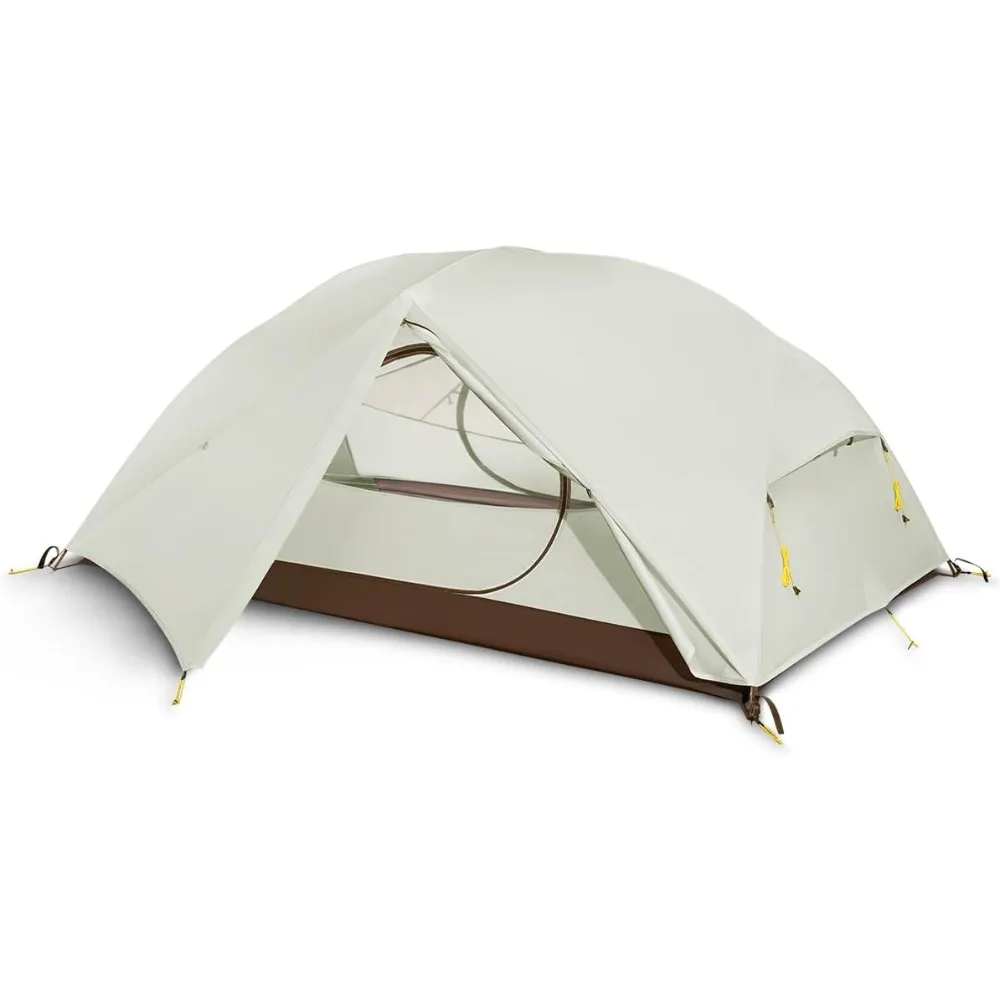
Vestibule Considerations for Different Camping Styles
Your ideal vestibule configuration largely depends on your camping style. Different approaches to outdoor adventure create distinct storage and shelter needs.
Backpacking Considerations:
* Prioritize weight-to-space ratio—look for designs under 8-10 ounces per square foot of coverage
* Consider asymmetric vestibules that provide focused coverage where most needed
* Evaluate dual-use components (trekking pole support options to eliminate dedicated poles)
* Seek silicone-treated nylon (silnylon) or Dyneema composite fabrics for lightweight durability
Car Camping Considerations:
* Size becomes more important than weight—look for extended coverage options
* Consider freestanding vestibules that can be positioned independently
* Evaluate ease of access and standing height options for maximum convenience
* Look for features like integrated doormats or gear pockets for organization
Family Camping Considerations:
* Multiple access points prevent bottlenecks during entry/exit
* Larger covered area accommodates bulkier family gear and activities
* Consider sidewall options for additional privacy and protection
* Look for robust materials that withstand higher traffic and use
Winter Camping Considerations:
* Seek steeper wall designs that shed snow loads effectively
* Evaluate vestibules with adjustable ventilation to manage condensation in cold conditions
* Consider snow flaps or extendable ground attachments for sealing against drifts
* Our selection of winter camping tents with specialized vestibule features addresses these unique requirements
Extended Trip Considerations:
* Prioritize durability and repair-friendly materials for long-term reliability
* Look for vestibule designs that facilitate organized long-term storage systems
* Consider models with multiple configuration options for adapting to changing conditions
* Evaluate weather resistance for sustained protection during extended exposure
Pro Tips: Optimizing Your Vestibule Organization
Strategic organization transforms your vestibule from a gear dumping ground into a functional extension of your camping system. These expert techniques maximize the utility of this valuable space:
Create zoned storage areas – Designate specific areas for clean/dry items, wet/dirty items, and cooking equipment to prevent cross-contamination.
Utilize vertical space with lightweight cord systems hung from vestibule poles or attachment points. Simple cordage creates hanging storage that keeps items off the potentially wet ground.
Position gear by access frequency – Items needed frequently should be nearest the door, while “until needed” equipment can go deeper into the vestibule corners.
Extend your footprint under the vestibule to create a clean, dry floor surface that protects gear from ground moisture and dirt.
Use compression sacks to minimize the volume of soft goods like extra clothing or sleeping bag stuff sacks. This creates more usable space for rigid items.
Create a gear map by consistently placing items in the same location each time. This “muscle memory” organization system prevents frantic searching in the dark.
Maintain a clear entry/exit path through your vestibule to prevent tripping hazards, especially important for nighttime bathroom trips.
For a deeper look at maximizing your storage efficiency, our complete guide to mastering tent vestibule organization provides systematic approaches to gear management.
Heavy Duty 4 Season Tent, Mountaineering Tent, Winter Camping Tent
$870.40 Select options This product has multiple variants. The options may be chosen on the product pageCompact Backpacking Tent, Lightweight Backpacking Tent, Waterproof Camping Tent
$335.52 Select options This product has multiple variants. The options may be chosen on the product pageUltralight Backpacking Tent, Ultralight Dome Tent, Winter Camping Tent
Price range: $369.63 through $370.07 Select options This product has multiple variants. The options may be chosen on the product pageCamping Tent with Vestibule, Waterproof Camping Tent
Price range: $407.89 through $479.48 Select options This product has multiple variants. The options may be chosen on the product pageHeavy Duty 4 Season Tent, Ultralight Freestanding Tent, Winter Camping Tent
$3,722.66 Select options This product has multiple variants. The options may be chosen on the product pageBackpacking Tent with Vestibule, Freestanding Backpacking Tent, Lightweight Backpacking Tent
Price range: $446.89 through $447.22 Select options This product has multiple variants. The options may be chosen on the product page
Safety Considerations for Vestibule Use
While vestibules provide valuable benefits, using them safely requires attention to several important considerations:
⚠️ WARNING:
Never cook inside your vestibule. Despite the temptation during bad weather, the enclosed space creates serious fire risks and dangerous carbon monoxide buildup that can be life-threatening.
If cooking during poor weather, position your stove at least 4-6 feet away from the tent while using the vestibule door flap as a partial wind block (keeping the flap fully open for ventilation). This maintains safety while providing some weather protection.
Additional safety considerations include:
- Trip hazard prevention: Arrange gear along vestibule edges, maintaining a clear central path
- Guy line visibility: Consider reflective cord or markers on vestibule lines to prevent nighttime accidents
- Proper ventilation: Never completely seal vestibules when occupied to prevent condensation buildup
- Weather awareness: During high winds, store only low-profile items in vestibules to prevent wind capture
- Wildlife precautions: Never store food or scented items in vestibules in bear country or areas with active wildlife
Attentive vestibule management prevents common camping mishaps and ensures this space enhances rather than compromises your outdoor safety.
Frequently Asked Questions About Tent Vestibules
Can you add a vestibule to any tent?
While many tents accept aftermarket vestibules, compatibility depends on your tent’s design. Freestanding dome tents often accommodate universal add-on vestibules, while specialized designs may require brand-specific accessories. Look for attachment points and a compatible rainfly design.
How much extra weight does a vestibule typically add?
Add-on vestibules generally weigh between 8-16 ounces (227-454 grams) for backpacking models and 1-2 pounds for larger camping versions. Integrated vestibules add minimal weight since they share structural components with the main tent.
Are vestibules completely waterproof?
Most quality vestibules provide excellent water resistance but may not be 100% waterproof in sustained downpours. Their primary weakness is often where they meet the ground. Using a ground cloth extension or proper tensioning significantly improves water resistance.
Can you use a vestibule as an additional sleeping area?
Vestibules are generally not designed for sleeping. They typically have no floor, limited headroom, and poor ventilation compared to the main tent body. In emergency situations, a large vestibule might accommodate sleeping, but this isn’t recommended for regular use.
What are alternatives if my tent doesn’t have a vestibule?
Alternatives include lightweight tarps configured as awnings, free-standing canopies, or specialized clip-on tent porches. Even a well-positioned rain poncho can create temporary protected storage.
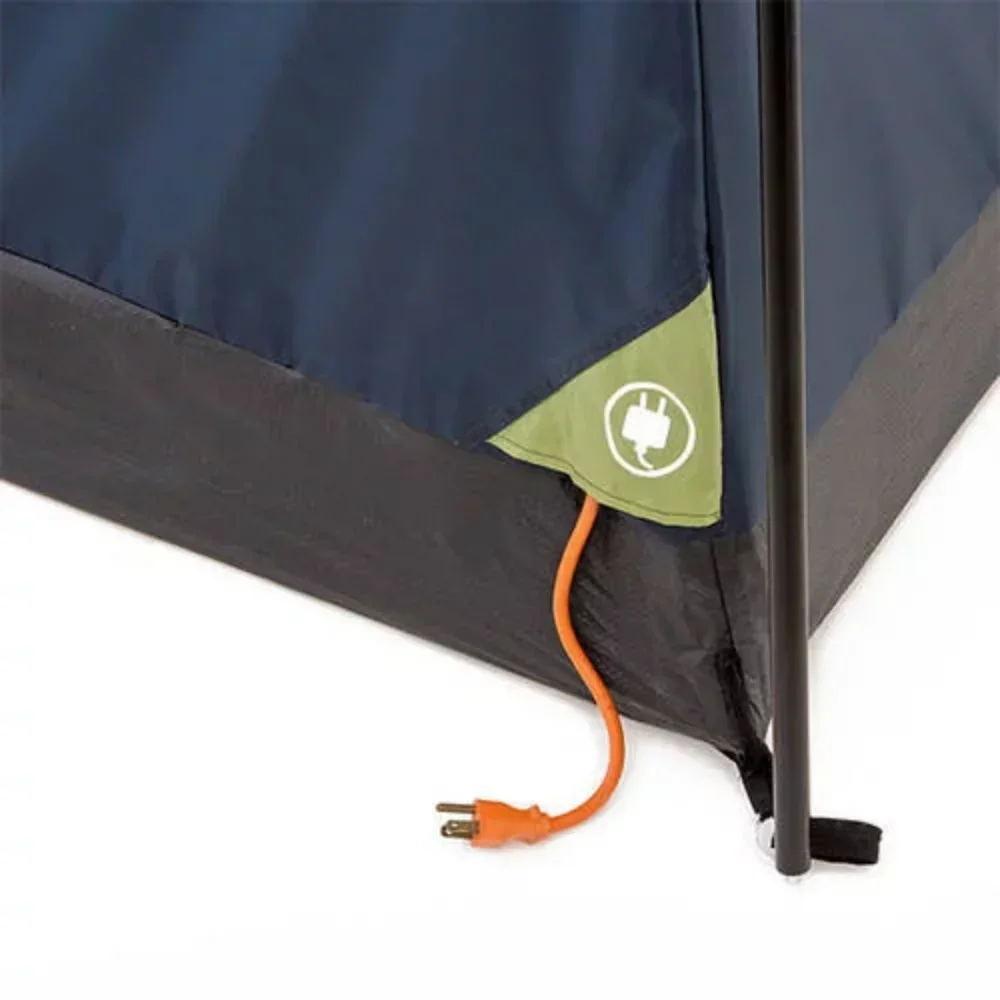
Summary: Why a Vestibule Is Worth the Investment
A well-designed tent vestibule delivers value far beyond its weight and cost. This often-overlooked feature transforms your camping experience by creating a functional buffer zone between the natural elements and your sleeping quarters.
The benefits we’ve explored—from maximizing interior space and protecting gear to creating a clean transition zone and versatile sheltered area—all contribute to more comfortable, organized, and enjoyable outdoor adventures. Whether you’re a weekend car camper or dedicated backcountry explorer, proper vestibule utilization elevates your camping experience.
When evaluating your next tent purchase, consider the vestibule design as a core feature rather than an afterthought. The modest weight addition typically yields disproportionate benefits in functionality and comfort. For those seeking specific recommendations, our guide to tents with excellent vestibule storage options highlights outstanding models across various camping styles.
For innovative approaches to maximizing covered space, explore tent designs with expanded vestibule space that push the boundaries of traditional configurations.
By thoughtfully utilizing this valuable covered space, you’ll experience more organized, comfortable, and enjoyable camping—regardless of what weather conditions you encounter on your outdoor adventures.

